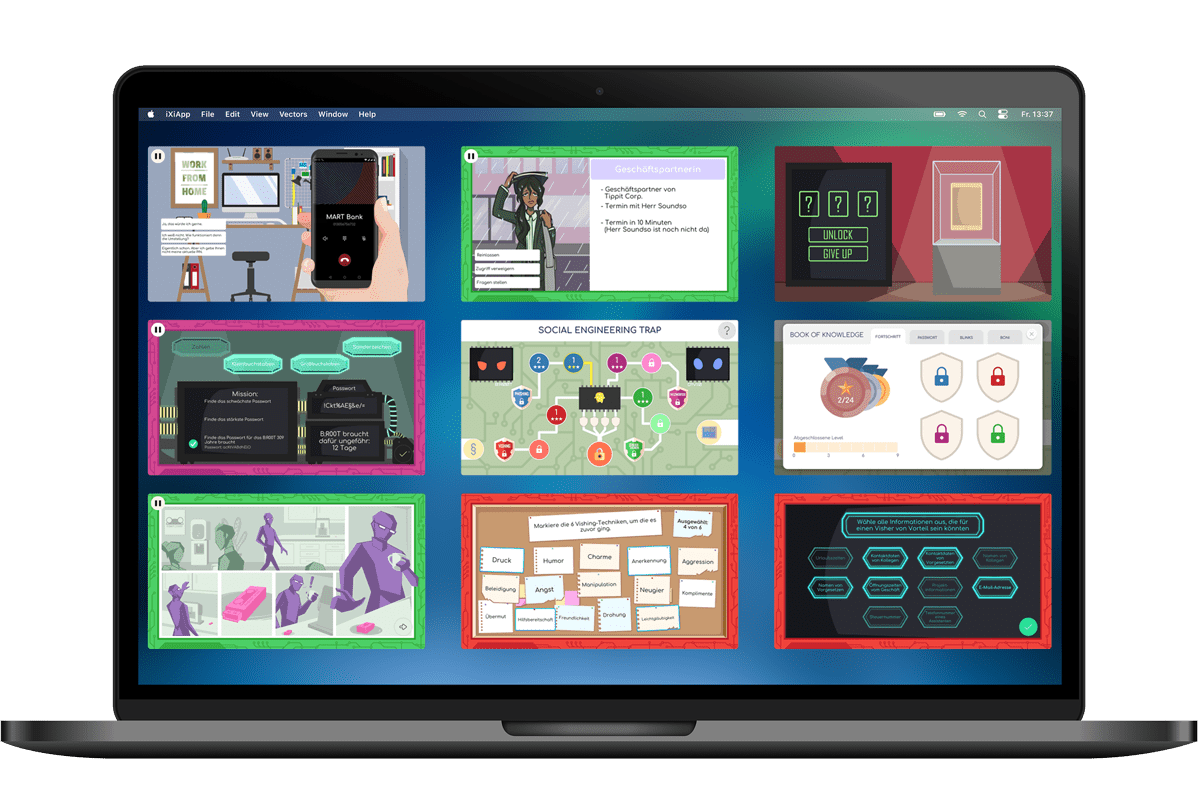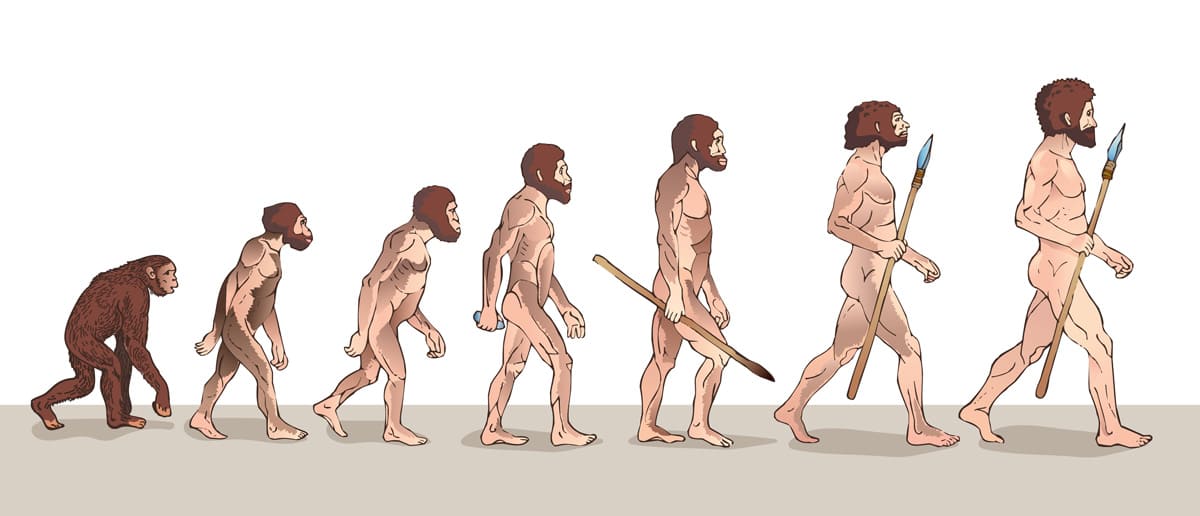Management development | Personnel development
Learning through play - how serious games enrich the continuing education landscape?
A conversation with Tomislav Bodrozic, Managing Director of Fabula Games
The interview was conducted by Sabine Walter, Head of netzwerk managementberatung | coaching
Gamification is the application of playful principles in a non-game context. Serious games are real games. They are meant to help us learn or practise something.
S.W.: Gamification is a word that comes up more and more often in the context of continuing education. What does it mean?
Very often the word gamification is used synonymously with playful learning. This is only partly correct. From a scientific point of view, gamified learning is game-based learning. And this represents the umbrella category for various learning formats. One format that belongs to this category is gamification. This is the application of game-based principles in a non-game context.
I would like to illustrate this with two examples from the analogue world. Let's take McDonalds. When McDonalds conducts Monopoly, i.e. customers collect streets and then get a burger for free, the company combines playful elements with a non-playful context. A similar example is Payback. We shop, collect points and later exchange them for rewards.
Of course, gamification can also be found in the digital environment, for example in apps like Duolingo or Bubble. These language learning apps are not games. But they use many gamified principles such as points, awards, ranks or stars in a non-game environment.
In contrast to gamification, there are serious games. These are real games with game principles and rules.
S.W.: Why are serious games called "serious games" and not just games?
With normal games like "Settlers", "Uno" or "Ludo", we play to have fun or to avoid boredom, but there is no further intention. This is different with serious games. Here the intention is that we should learn or practise something while playing.
Almost all topics are suitable for serious games. Soft skill topics are particularly suitable.
S.W.: Which topics are suitable for serious games? Which are not?
We have made the experience that almost all topics are suitable for serious games. Soft skill topics are particularly suitable. Why? Because the games can depict human characteristics and behaviour very well. Simulations of procedures and processes, such as operating a machine, are also well suited to a game context.
Subjects that can only be depicted with a great deal of time and effort in the context of serious games are theoretical knowledge that has a strong scientific context, such as "binomial formulae" or "electromagnetic currents".
S.W.: What criteria does a serious game have to fulfil so that people enjoy playing it and stay with it?
This is a complex question that I will answer in two parts. First, I will address the question: "What has to happen for people to enjoy playing and complete the game?" This is a question of motivation, and in particular intrinsic motivation.
This intrinsic motivation is achieved through various playful principles that have a certain quality. These include: curiosity, excitement, shared values or even the desire to finish something.
How do we achieve this concretely? Curiosity: We achieve this in our games by telling a great story. And, as with any good series, we achieve the effect that the player wants to know what happens next. Will the prince get the princess? Will the bad guy lose?
Excitement, a second factor for intrinsic motivation, can be well linked to curiosity and incorporated into the story, for example through twists and turns or failures.
Common values also contribute to intrinsic motivation. This is where the client is important. They know best which values connect employees. And if these values are expressed in the game, they encourage motivation to continue playing.
Motivation can also be to properly finish something. i.e. game progress. I've already completed two thirds and want to finish the last third. That's why I keep playing.
Serious games are completed by 93% of all players. For e-learning formats it is only 25%.
Studies have investigated various continuing education formats and looked at the question: "How often are certain learning formats followed through to the end?" For classic e-learning formats, the average drop-out rate is 75%. So only a quarter of the people who have started a voluntary e-learning actually finish it.
For serious games, the dropout rate is 7%; so 93% play until the end.This underlines an advantage that serious games have over classic e-learning formats.
This brings us to the second aspect of the question, the aspect of effectiveness. "So what does a game have to be like for something to remain in memory too?"
There is no research on this that I know of. Therefore, my answer is based purely on our experience. We have identified five criteria that help to ensure that the content conveyed also sticks with the players:
- Active Engagement
- Motivation
- investment
- Simulation
- Immersion
S.W.: What is meant by this?
The first criterion, Active Engagement, is quite trivial and yet shockingly rare in e-learning. If I am actively engaged, I will usually interact and take more away through the interaction than if I just consume, as is the case when watching videos.
When actively engaged, the game ensures that the player engages with something and, ideally, interaction takes place within the first 60 to 90 seconds.
The second criterion, Motivation, has already been talked about. The third criterion, investment, requires more explanation. For investment there are research results. The American Nir Eyal has investigated the questions: "What distinguishes apps that are frequently used from so-called zombie apps that we have downloaded but do not use?" The sad thing is 99% of the apps in the App Store are zombie apps. They don't really engage us. The remaining 1% go through 4 phases:
- Trigger (action trigger)
- Active Engagement
- Variable reward
- Investment, app users enter their own data into the app.
This investment does the following: it will use the data in such a way that it enables even better variable rewards tailored to the user. The more frequently this process takes place, the more an automatism is developed that ensures that an emotional need is satisfied in the app user. For example, Facebook: Facebook forms the habit of avoiding possible boredom, which has negative connotations for many people.
This is why the investment is also so important for the effectiveness of serious games. Only if the game manages to take into account data that a player enters in the course of the game, thus adapting the game to the player, does the game and thereby the training gain value.
S.W.: These three criteria you mentioned also apply to good face-to-face training. Quick active engagement, creating relevance so that the participants realise that the topic has something to do with them; responding to the concrete wishes and concerns of the participants and adapting the training.
Serious games invite experimentation.
That's right, that's why good face-to-face training is far more effective than e-learning. However, there are two criteria that positively influence the effectiveness of serious games: simulation and immersion. And these are not always or not easily replicable in classroom training.
Regarding Simulation: Of course, it is possible, for example, to simulate employee discussions within the framework of role plays in classroom training. But when it comes to learning how to operate production machines, this is much easier to simulate in a virtual environment. Furthermore, in a serious game we can create a world that is deliberately detached from the real world of experience in order to promote new patterns of thinking or try out new behaviour. There are games that take place on Mars, for example. The players have to try to communicate with new peoples. Or there is a simulation that has the players stuck in a computer. The players have to try to get out of this computer.
Simulation is so important in a serious game because it invites experimentation and almost provokes making errors. New behaviour should be tried out and consequences should become visible without causing real harm.
The fifth and final criterion is Immersion. This means that the players are completely immersed in the game and the learning world and forget everything else around them. Immersion happens when all the other four criteria are very high. And this ultimately leads to players taking a lot out of the game. Immersive learning means learning with more than cognitive awareness. There are feelings involved, tangible experiences that can be recalled immediately when the players then find themselves in a similar situation in everyday life.
Hybrid formats - play and exchange at the same time
S.W.: Now I get feedback from all our clients that they are looking for face-to-face workshops and face-to-face training. How can serious games be linked with face-to-face events to create a coherent whole?
This is exactly the question we have been asked frequently over the last three months. We have found a solution for us that makes sense. We use face-to-face sessions to form small groups who then play a game together on a piece of equipment. In order to find the best solution or the best course of play, the players have to discuss and vote. In addition, an exchange of experiences can be held in the general discussion after the game. Aspects from the game can be deepened or further developed in this framework.
The exchange in front of the screen is much more conducive than the engagement with the screen. The game is only the catalyst for the exchange. That's why I'm a big fan of the combined format.
At this point, I would like to give another example of an automobile manufacturer. We developed a compliance game for them 7 years ago. The game was a solo game, so the employees played alone. But as the level of difficulty of the game increased continuously, the employees interrupted the game to ask colleagues for advice on how they could solve certain game situations. And thus exchange took place. And this exchange and the discussion in the team about the content of the game is a very central point when it comes to internalising things.
Serious games can support Knowledge Management in companies in a playful way.
S.W.: Your example shows that serious games can also contribute to the transfer of knowledge within teams or the company and to the exchange and further development of ideas.?
Yes, I would therefore like to expand on this aspect, because the subject of Knowledge Management is on the agenda of many companies. But it also presents them with challenges. How can the knowledge that exists in the company in the most diverse places and minds contribute to the further development of the organisation?
We do this by creating a learning environment where every employee can easily contribute their knowledge. We have developed a concept that allows each employee to put together a virtual sphere with knowledge, processes or procedures and dock it onto other spheres. The other spheres form an atom around which electrons move. At some point, a molecule is formed from this. And when you put that molecule together with other molecules, you get a double helix DNA. And this double helix DNA is the corporate knowledge that is constantly changing and expanding. The molecules are networked and keyworded, and thus the knowledge they contain can also be used.
I am convinced that it will become very attractive to provide or pass on intellectual know-how or ideas in such a simple, playful way. Fortunately, AI will increasingly make it easier for us to find this knowledge, so that time-consuming indexing will no longer be necessary.
Knowledge transfer through simulations
S.W.: In addition to this exchange and this form of knowledge transfer, what ensures that what is learned in the serious game is also applied in everyday life?
The most common way we ensure this transfer is through simulations. I distinguish two phases for this. The first phase is the learning phase. In this phase, employees learn something new in a fictitious environment, gain experience and let off steam.
Then comes the second phase, the examination phase, which is represented by a simulated reality. So it is no longer played in the fictional world, but in the familiar office environment. And there, for example, a colleague comes by who - keyword: compliance - gives me two tickets for a football match. And I have to behave in the simulation as I should in the real world. The situations that we simulate correspond to a very large extent to real experiences, so that the transfer is in fact not necessary.
This works extremely well. We get feedback from our clients that it is not only fun, but that the employees take away something concrete for their everyday life.
How should a company proceed if it wants to use serious games?
S.W.: Let's assume a company is interested in taking up serious games as a further training opportunity, how should this company proceed?
The first thing we do with prospective customers is demystification. So we take the coolness out of the gamification desire. Because, when a company invests in a serious game, it should not only be cool but above all effective. So the investment associated with the game should also provide a return.
So we talk about which goals are to be achieved through the game, which can be achieved and which cannot.
If the company wants to pursue the idea of the game, we conduct a workshop in a second step to better understand the target group or target groups. Who is going to play the game? What makes them tick? What values are predominant? What are the needs? All this is crucial to set the right framework for intrinsic motivation with the game concept.
We also talk about learning in the workshop. How should learning take place? How is learning done so far? What works well? What does not?
The workshop serves to ensure that we end up having an outline of ideas that provide the company with a basis for discussion to decide whether they still want to go down the game route. If this is the case, we prepare a quote that serves as the basis for the final decision.
After the order is placed, we create something that resembles a script. And only when that is approved do we go into production.
S.W. What budget does a company have to plan for a serious game?
I cannot answer this question with a number, because the investment depends on various criteria, such as the amount of learning content or the quality of the graphics. Most companies that include games in their training offer invest between 50 - 150 TEUR. For that, they get a solid game.
S.W. My last question is a personal question. What topic would you like to develop a game about?
Most of all, I would like to develop a game around the question: How can we as a society find our way back to each other?
I have the impression that a lot has changed in the last two years in terms of togetherness, which is not necessarily for the better. I am convinced that we humans depend on each other and need each other. This requires respectful interaction and exchange. Both have been lost to a certain extent. That's why I would very much like to develop a game that is about experiencing and working out human and social values and finding out where everyone would like to develop personally.
If I could do that, it would be very fulfilling.
Tomislav Bodrozic is managing director of Fabula Games. The company develops serious games, i.e. learning games for companies that teach and train new behaviours or processes in a playful way.



